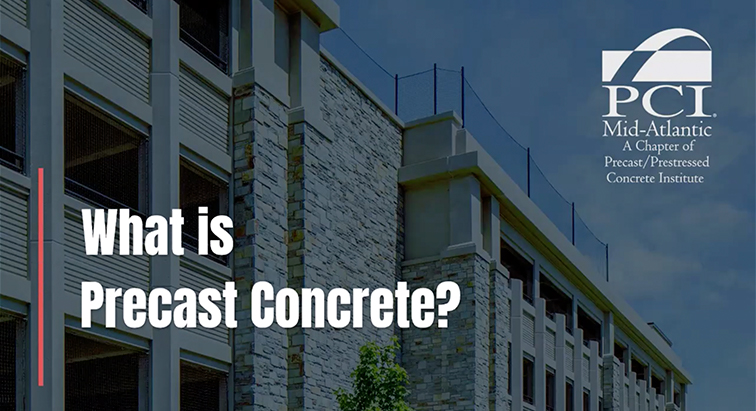Precast concrete is a versatile, efficient, and resilient building material. It’s used as an architectural material for building envelopes and other applications, as well as a structural system for buildings, parking structures, and bridges. It’s a versatile, high-performance material that easily integrates with other systems and provides a wide variety of benefits.
But what is it composed of and how is it manufactured?
We’ll explore what precast concrete is and some of the many benefits it can offer, so you can better determine if it’s right for your next project. To learn more about precast concrete, watch the video below.
Before you can familiarize yourself with what precast and prestressed concrete are, it’s important to understand what concrete is.
What is Concrete?
Concrete is a construction material composed of cement that binds water, aggregates like sand and stones, chemical admixtures, and air. Different concrete mixtures and recipes can affect its color, strength, and performance. Weather conditions like temperature and humidity can also impact the final attributes of concrete.
The Precast Concrete Manufacturing Process
Precast concrete is concrete that is placed into a form and cast into various shapes which are used for walls, floors, beams, columns, and more. Unlike traditional concrete, which is poured on the jobsite, precast concrete is manufactured at an off-site facility in a quality-controlled concrete plant.
Once the manufacturing process is complete, the prefabricated, precast components are transported to construction sites and used to create a variety of buildings and structures.
Because it is manufactured in a plant, precast concrete components can be manufactured year-round in all weather conditions.
The Benefits of Precast Concrete
Here are some of the unique features and benefits precast concrete has to offer.
Fire Resistance
Because it’s noncombustible, structures made from precast provide passive fire protection. Precast concrete structures help contain fires and prevent them from spreading, without relying on building occupants or other systems to act.
Storm Resistance
For buildings in areas that often pose destructive hazards like storms, earthquakes, and blasts, precast concrete provides reliable protection while meeting the FEMA 361 guidance for safe rooms.
Energy Efficiency
When compared to other building materials, precast concrete has a higher thermal mass and provides strong insulation. Coupled with interior insulation, precast concrete creates high-performance, energy efficient walls. Precast insulated wall panels can even delay or reduce peak HVAC loads, further reducing initial equipment costs, increasing energy efficiency and improving occupants’ comfort.
Learn More About Precast, Prestressed Concrete
Review the benefits of precast, prestressed concrete in the video above and share it with your industry peers and clients to spread awareness of this innovative material.
Interested in learning more about precast and how the precasters of the PCI Mid-Atlantic Chapter support projects of all kinds? Explore the PCI Mid-Atlantic Solutions Center for helpful resources and get in touch with PCI-MA for precast information, higher education partnerships, and more.





